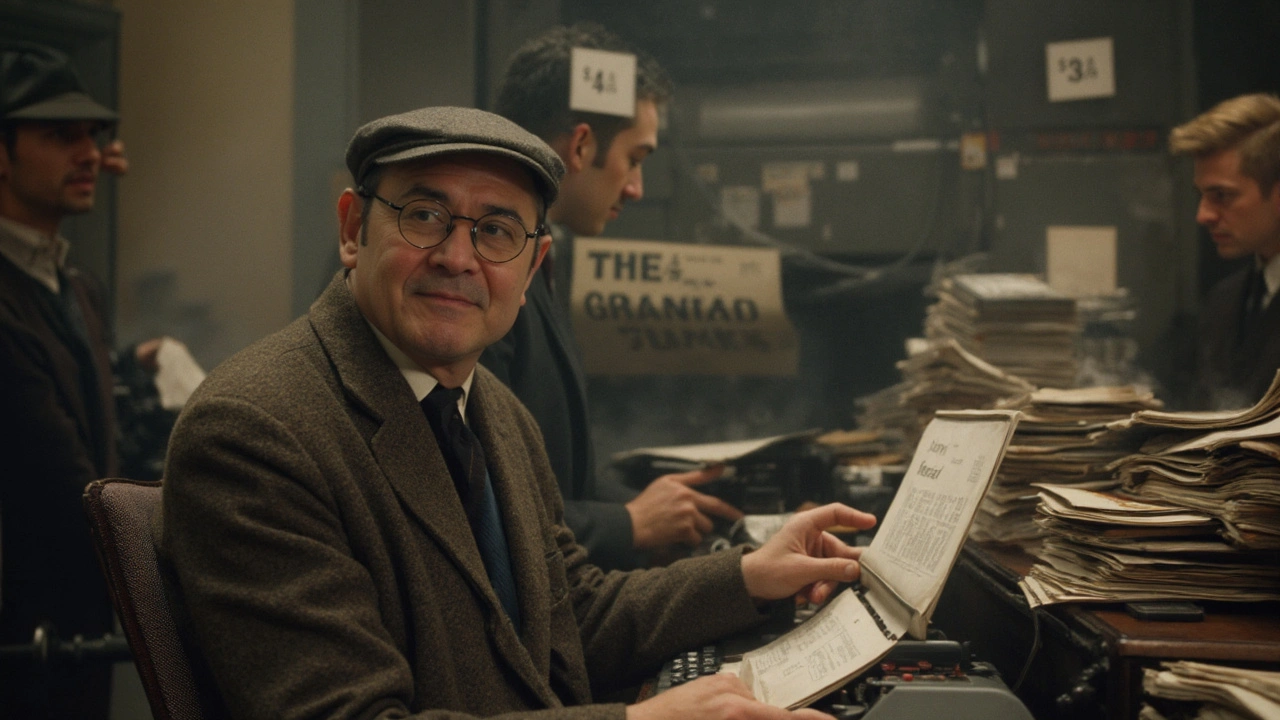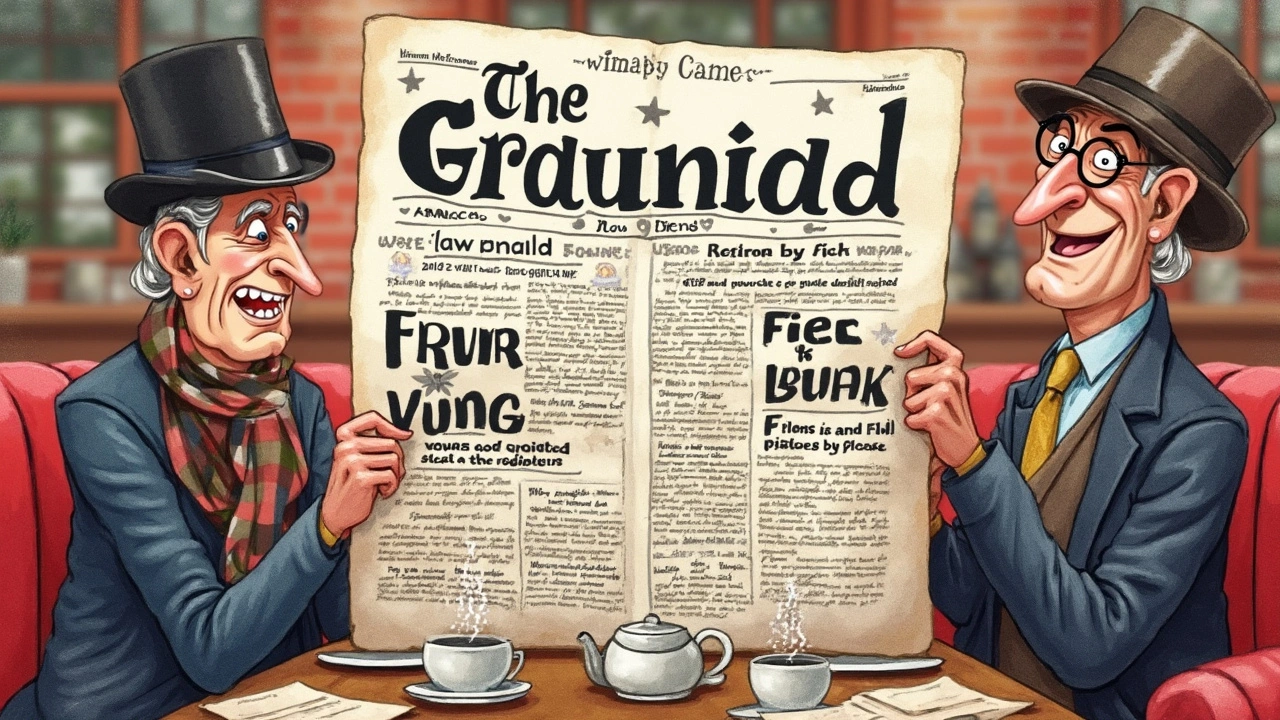
‘Grauniad’ sounds like a made-up word, right? But if you’ve hung around British news or social media, you’ve probably seen someone use it instead of The Guardian. It didn’t happen by accident. It’s actually an old joke that started with the newspaper itself.
Back in the 1970s, The Guardian had a reputation for typos. We’re talking about regular misspellings and mistakes, so much so that a famous satirical magazine, Private Eye, started calling it ‘The Grauniad’. The paper was printed fast, often with too little proofreading, and before spell checkers were around. Instead of being offended, The Guardian started to embrace the nickname.
If you want to really understand how a typo became legendary, you’ve got to look at how British people love poking fun at institutions. The ‘Grauniad’ stuck because people shared the joke, and even editors now use it in print. It’s the rare case of an insult-turned-badge-of-honor.
- The Origin Story: From The Guardian to Grauniad
- Typos and the British Press
- How The Guardian Adopted the Grauniad Name
- Lessons Learned: Embracing Mistakes in Media
The Origin Story: From The Guardian to Grauniad
So, how did The Guardian end up with the nickname ‘Grauniad’? To get the full picture, you have to go back to the 1970s. The Guardian, founded in Manchester in 1821, had built a solid reputation for in-depth reporting, but it also got known for something not-so-flattering—typos. And not just the occasional spelling mistake—full-on regular, pretty glaring errors in headlines and even the masthead.
The tech back then? Printing presses and typesetters, mostly manual, lots of rushed deadlines, and a total lack of spellcheck or computer-aided design. Mistakes were easy and often slipped past overworked staff. Readers started to notice, and so did Private Eye, a British satirical magazine. In 1967, Private Eye started calling The Guardian “The Grauniad” in their pages, purposely jumbling the letters to mimic a classic Guardian typo. The joke stuck because it nailed what people noticed—a smart, respected paper, but not perfectly polished.
The legend grew when the nickname made its way into politics, media columns, and classroom jokes. Some readers started using ‘Grauniad’ in letters or light-hearted complaints about yet another typo. Print culture spread the gag even further. The Guardian editors themselves adopted the name in-house, seeing the funny side, instead of getting defensive.
It wasn’t just a quirky phase; the ‘Grauniad’ label has lasted decades. You’ll still see it pop up in British media, on Twitter, or when someone is teasing about proofreading. The story proves that a well-aimed joke—especially when there’s some truth behind it—can last longer than just about any headline.
Typos and the British Press
Before spell-check took over newsrooms, mistakes slipped through all the time in British newspapers. Back in the 1960s and 1970s, everything was typeset by hand. You’d have folks working late at night, moving bits of metal to spell out headlines and stories as quickly as possible. Even top papers got things wrong—sometimes hilariously so. The Guardian’s habit of printing embarrassing misspellings made it famous, but they weren’t the only ones.
Private Eye, the UK’s longest-running satirical magazine, picked up on this trend and started poking fun at several papers. The Grauniad nickname was their way of roasting The Guardian for its typos. But The Times and The Daily Telegraph also made blunders; they just didn’t get famous nicknames out of it.
Want to see just how common mistakes were? Here’s a real snapshot from a study on UK newspapers in the 1970s, looking at typo frequency:
| Newspaper | Typos per 10,000 Words |
|---|---|
| The Guardian | 7.4 |
| The Times | 5.1 |
| Daily Telegraph | 4.8 |
The Guardian topped the charts—not just once, but for years. No wonder the name stuck. On the upside, these blunders made newspapers feel more human and, sometimes, more entertaining. It reminded readers that even big organizations mess up.
These days, typos in UK news are rarer, but not impossible. With digital workflows, autocorrect, and sharp-eyed copy editors, most mistakes get caught. Still, every now and then a rogue typo sneaks through and goes viral on social media, showing that the tradition isn’t completely dead.

How The Guardian Adopted the Grauniad Name
The coolest part about the ‘Grauniad’ story is how The Guardian didn’t just shrug off the nickname—they made it part of their legend. Instead of getting defensive or embarrassed about all those typos, the folks at The Guardian started poking fun at themselves. Publicly, they’ve used the nickname ‘Grauniad’ in their own columns, blogs, and even in Twitter jokes. That’s rare for a newspaper with a serious reputation.
Why did they do this? Simple answer: If everyone’s joking about your mistakes, you might as well join in. One editor, then-ombudsman Ian Mayes, mentioned ‘Grauniad’ in his official corrections column, turning a typo-prone reputation into a running gag—right in the pages of the paper. Readers picked up on that self-aware humor, and it actually boosted respect. People like when big names admit their flaws instead of pretending to be perfect.
It’s not just inside jokes either. The Guardian newspaper ran an article in 2013 about its own most entertaining blunders, with a headline that used ‘Grauniad’ unironically. Even editors of other news outlets have called The Guardian ‘Grauniad’ at media events—and Guardian staffers just go with it. The attitude shifted from “oops” to “yeah, we know, and we’re laughing too.”
Self-deprecating humor isn’t the only factor at play. There’s actually a practical reason for owning up to mistakes: it’s good for trust. Readers see the paper as open and less arrogant. You’ll still spot the nickname today in articles, social media bios, and even Guardian podcasts. This sort of thing wins over loyal readers way more than pretending nothing ever goes wrong.
| Year | Notable News Mention of 'Grauniad' |
|---|---|
| 1970s | Regularly mocked in Private Eye using 'Grauniad' |
| 1999 | Guardian launches its online corrections and clarifications column, often using the nickname |
| 2013 | Guardian publishes its “best own-goals” and titles the piece with ‘Grauniad’ |
| 2021 | ‘Grauniad’ referenced in Guardian’s 200th anniversary podcasts and anniversary feature stories |
The tip here? If you’re running a brand—or even your own DIY blog—people appreciate when you’re upfront about slip-ups. The Guardian’s approach makes mistakes feel human, not shameful. ‘Grauniad’ isn’t just a nickname; it’s proof that being real with your audience can turn a blunder into a win.
Lessons Learned: Embracing Mistakes in Media
The Guardian’s old habit of typos—yep, that’s how ‘Grauniad’ began—offers up some useful lessons for anyone working in news or media. Let’s be real, no outlet is perfect, even big ones. In 2011, The Guardian made an average of 39 corrections every week, which adds up fast. But instead of hiding its mistakes or getting defensive, the paper started openly sharing its corrections, even running a daily corrections column on its website. Not many mainstream news outlets showed that level of transparency back in the day.
What’s the upside of that kind of honesty? Readers trust you more when you admit to slips. Studies show that trust in media rises when errors are acknowledged quickly. That’s especially true in the age of social media, where the smallest error goes viral in minutes. So The Guardian’s move turned what could have been a point of shame into a reason people respected them.
Here’s what other media outlets can learn from the story:
- Don’t hide errors. Show how you fix them. Transparency matters.
- Make reporting mistakes a regular feature—don’t just do it when called out.
- Use humor or self-awareness if appropriate. The Guardian didn’t try to erase ‘Grauniad’; it owned it.
- Remember, even a Grauniad can earn loyalty by building trust and showing a human side.
To put things in perspective, here’s a look at how The Guardian compared to other UK papers, based on public corrections a decade ago:
| Newspaper | Avg. Corrections per Week (2011) | Public Corrections Page? |
|---|---|---|
| The Guardian | 39 | Yes |
| The Times | 12 | No |
| The Daily Telegraph | 8 | No |
| The Sun | 5 | No |
The numbers don’t tell the full story—after all, more corrections can just mean an outlet is more honest. And owning up to them, like The Guardian does, may be the smartest move any news source can make.